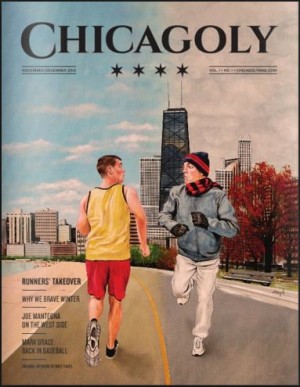
It may be hard to believe now but a century ago many Americans who lived between the Rocky Mountains and the Appalachian Mountains obtained their news and much of their printed entertainment from Chicago-based companies. Several Chicago-based magazines were among the largest circulated magazines in the nation. In recent days with the news that Tronc (the silly name for the old Chicago Tribune company) had sold the Los Angeles Times to a West Coast investor and may itself be up for sale, Chicago will be completely void of any locally owned media companies with even a regional, much less national, import. The ever shrinking Sun-Times is going through its third ownership group in recent years and has just sold the weekly Reader to a small publication based in Gary, Indiana.
Perhaps the biggest disappointment was the demise of Chicagoly Magazine that was only launched a couple of years ago. It was the offshoot of Twentieth-Second Century Media which publishes a group of micro papers in the suburbs. The executive editor, Joe Coughlin, promised a hard-hitting journal with “powerful, indepth stories.” The magazine never lived up to the promise although it did win some awards. Chicagoly was yet another lifestyle magazine targeted to a market already served by Chicago Magazine owned by Tronc (Chicago Tribune) and Time Out Chicago.
The decline of Chicago’s media publishing industry is more than the loss of community pride. It has a deleterious effect on the arts community both the fine arts and the popular arts. The Reader in its heyday was instrumental in the development of Chicago’s neighborhood theater industry. The reviews and the commentary, even the controversy, brought attention to the theaters and increased their patronage. The media companies were once big employers of visual artists. Chicagoly was something of a throwback by using commissioned art on its covers instead of celebrity photographs. The diminution of magazines and newspapers has had a corresponding diminution in Chicago’s literary and art communities.

Recent Comments